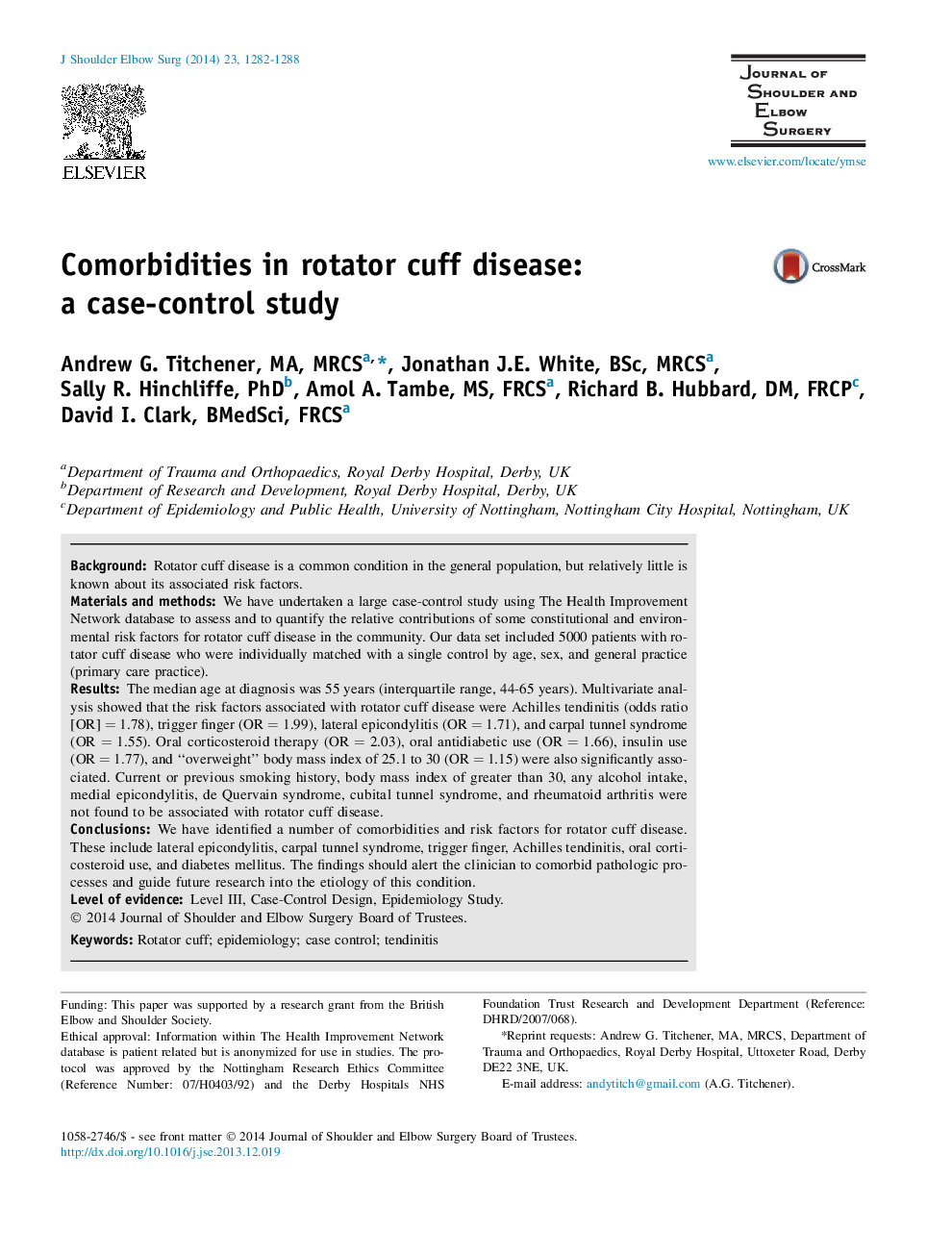| کد مقاله | کد نشریه | سال انتشار | مقاله انگلیسی | نسخه تمام متن |
|---|---|---|---|---|
| 4073536 | 1266984 | 2014 | 7 صفحه PDF | دانلود رایگان |
BackgroundRotator cuff disease is a common condition in the general population, but relatively little is known about its associated risk factors.Materials and methodsWe have undertaken a large case-control study using The Health Improvement Network database to assess and to quantify the relative contributions of some constitutional and environmental risk factors for rotator cuff disease in the community. Our data set included 5000 patients with rotator cuff disease who were individually matched with a single control by age, sex, and general practice (primary care practice).ResultsThe median age at diagnosis was 55 years (interquartile range, 44-65 years). Multivariate analysis showed that the risk factors associated with rotator cuff disease were Achilles tendinitis (odds ratio [OR] = 1.78), trigger finger (OR = 1.99), lateral epicondylitis (OR = 1.71), and carpal tunnel syndrome (OR = 1.55). Oral corticosteroid therapy (OR = 2.03), oral antidiabetic use (OR = 1.66), insulin use (OR = 1.77), and “overweight” body mass index of 25.1 to 30 (OR = 1.15) were also significantly associated. Current or previous smoking history, body mass index of greater than 30, any alcohol intake, medial epicondylitis, de Quervain syndrome, cubital tunnel syndrome, and rheumatoid arthritis were not found to be associated with rotator cuff disease.ConclusionsWe have identified a number of comorbidities and risk factors for rotator cuff disease. These include lateral epicondylitis, carpal tunnel syndrome, trigger finger, Achilles tendinitis, oral corticosteroid use, and diabetes mellitus. The findings should alert the clinician to comorbid pathologic processes and guide future research into the etiology of this condition.
Journal: Journal of Shoulder and Elbow Surgery - Volume 23, Issue 9, September 2014, Pages 1282–1288
